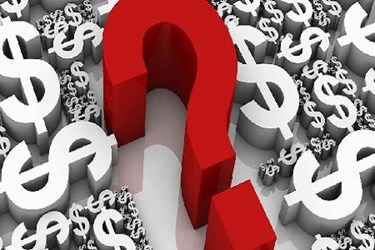What, No Tip?

By Bird Blitch, co-founder and chief executive, Patientco
How viewing healthcare through a customer service lens can positively impact patient revenue.
In most restaurants, diners have the option of leaving a tip after their meal. The decision about how much to tip — or for some, whether to tip at all — is made after evaluating the entire dining event. Factors taken into account typically include food quality and price, overall atmosphere, prompt and pleasant service, an accurate bill, and an easy, efficient payment experience. The tip acts as both recognition of a good experience and a means for driving better customer service.
Now, imagine for a moment the same were true of healthcare encounters. Would patients leave a tip on their experience? Probably not.
Patient satisfaction is an important element of patient-centered care. For example, feedback from satisfaction surveys not only drives positive changes in care delivery, but can also improve reimbursement. As much as 30 percent of a hospital’s Medicare reimbursement, for instance, can be tied to HCAHPS surveys.
While great strides have been made toward the adoption of patient engagement and care quality initiatives in the clinical experience, there’s now the potential for healthcare organizations to enhance patient satisfaction even more by turning their attention to the financial experience. Healthcare today is truly a service industry. Patients want — and deserve — a positive care experience, both clinically and financially.
Healthcare As A Customer Service Industry
Despite the increasing emphasis on customer service, a 2015 survey by the American Consumer Satisfaction Index found overall patient satisfaction is at its lowest level in nearly a decade — a lukewarm 75.1 on a scale of 0 to 100. In addition, a 2015 study by PwC Health Research Institute found one in five patients find their provider’s bill inconvenient to pay, with adverse impacts on satisfaction.
Statistics such as these highlight a tremendous opportunity for healthcare leaders. With a growing amount of revenue at stake and patients increasingly behaving like consumers, healthcare leaders need more consumer-friendly payment strategies. By improving the patient financial experience with clearer communication, streamlined billing, and more convenient easy payment methods, business offices can help their clinical counterparts create positive, meaningful, and long-term relationships with their patients. In the restaurant industry, consumers tip extra for clear communication and convenient service. Healthcare can do the same, with optimized revenue as a result.
So, How Do We Get There?
As healthcare leaders develop payment strategies to support better patient service and communication while preserving and growing revenue, technology should serve as an underpinning. Consider these elements of an effective patient payment strategy:
- Flexible payment methods. There are a number of tools today that do everything from scheduling visits to following up on the patient experience. However, such convenience isn’t yet typical from a financial perspective. That means organizations now have a chance to help patients understand how much they owe and make it easy for them to pay outstanding balances. Providing patients with simple and convenient options to pay — whether by cash, check, payment plan, or debit/credit card and in the office, online, over the phone or by mail — saves time and paves the way for prompt and full payment, promoting satisfaction for patients and providers alike.
- Continual patient communication. Offering convenient payment methods is only effective if patients are aware they exist. Thus, highlighting self-service payment options through patient communications is a key step in giving patients a positive financial experience. At each stage of an episode of care, providers should find a way to remind patients that they have the ability to manage, track and pay their expenses both offline and online. Also call attention to these options on patient statements, as well as on the homepage of the provider’s website.
- Comprehensive, single solution. Healthcare technology vendors that focus on revenue cycle management are not the same as payment processing vendors. Healthcare organizations need to have a single partner focused exclusively on patient payments. A qualified partner should offer the ability to handle every different type of payment that occurs at various stages in the revenue cycle as well as all of the patient data that accompanies those transactions. Leveraging a single solution not only streamlines billing and communication processes, but also makes it easier to utilize data to optimize the process, improve the experience for both patients and providers, and grow revenue. Additionally, a single-solution approach can improve security from the standpoint of ensuring all transactions are HIPAA and PCI compliant.
With all of these elements in place, patients and providers can track all payments across every payment channel, streamlining front- and back-office efficiencies and enabling superior customer service.
Healthcare: Tip Away
Patients’ billing and payment experiences have a significant influence on their overall satisfaction. These experiences often are the last chance a healthcare provider has to make a positive impression on their patients. As such, healthcare organizations can take cues from other service industries — like restaurants — to usher in a new focus on creating positive patient financial experiences. Providers who hope to improve patient satisfaction scores, boost revenue, and strengthen customer loyalty can take their first tip from the hospitality sector: start by building greater convenience, transparency, and reliability into payment systems to give patients a financial experience worthy of a great big tip.
About The Author
Bird Blitch is the co-founder and chief executive officer at Patientco.
